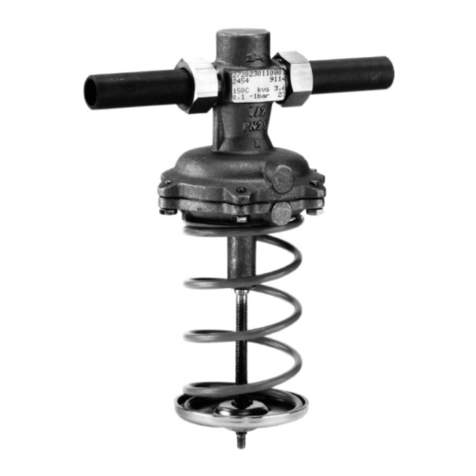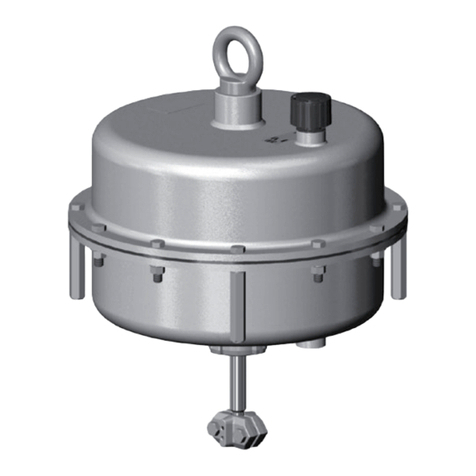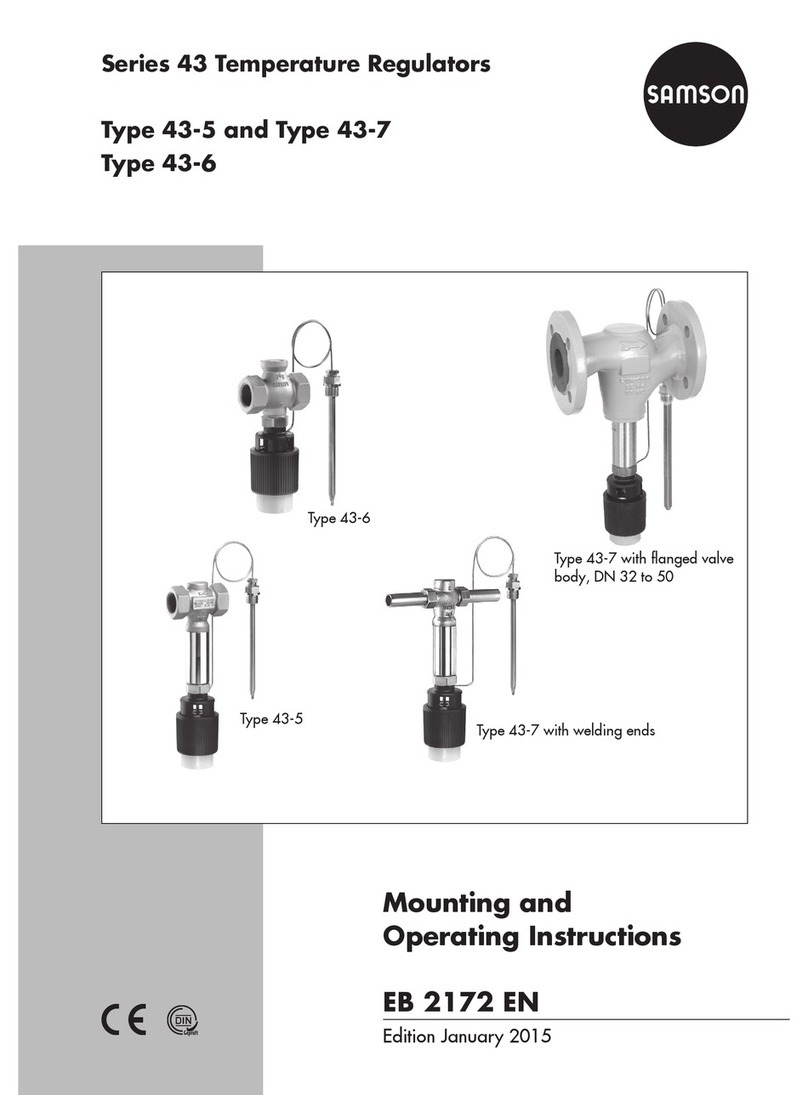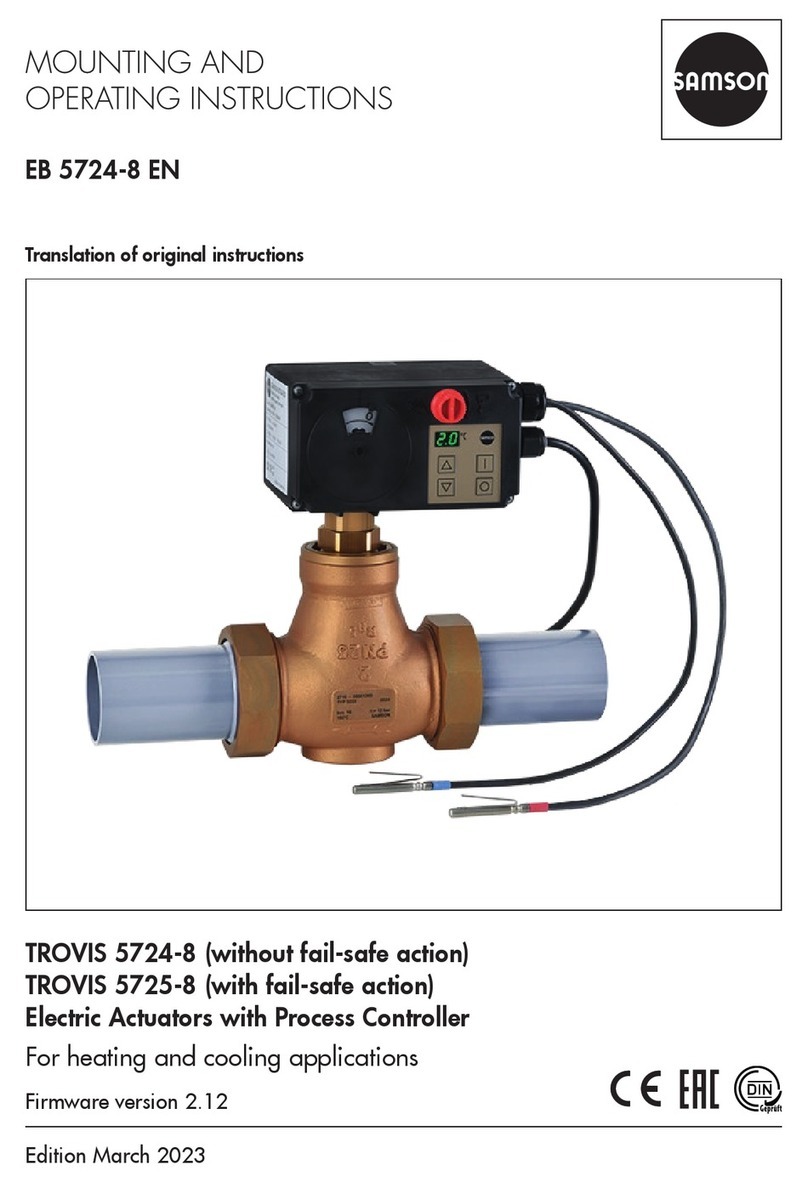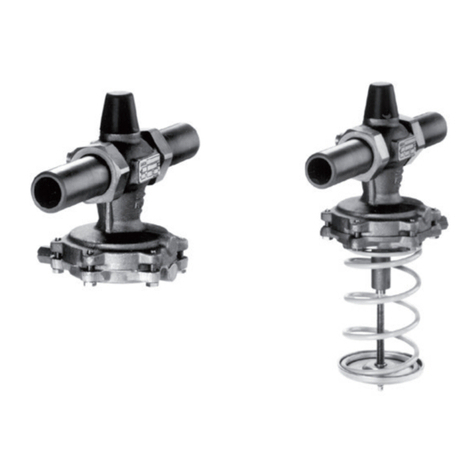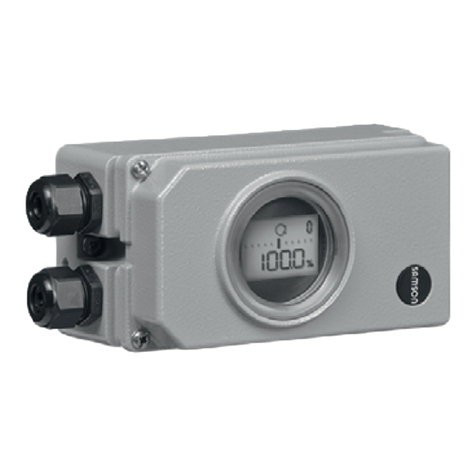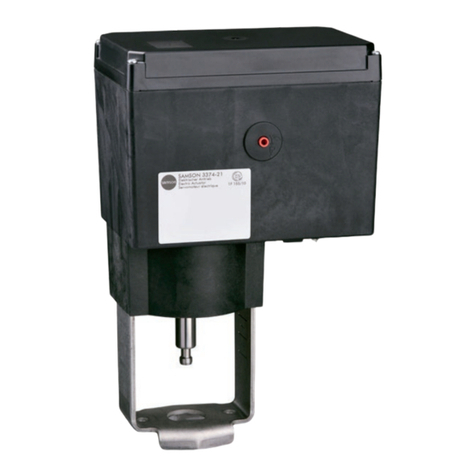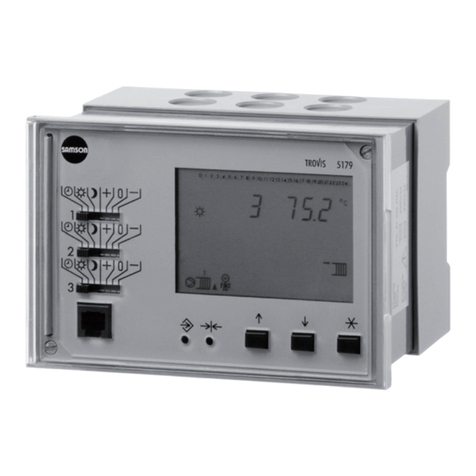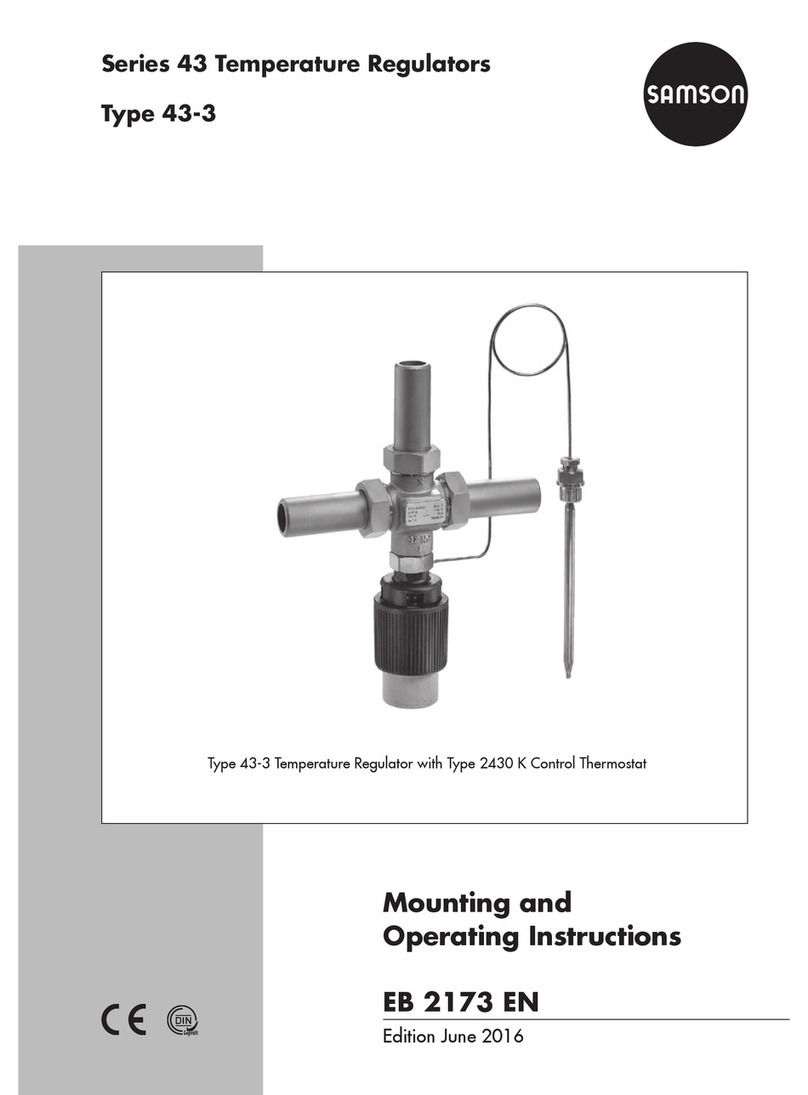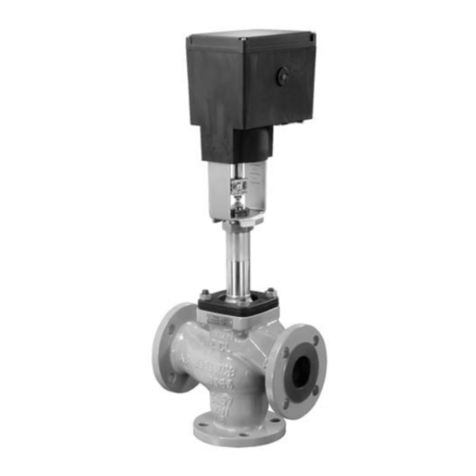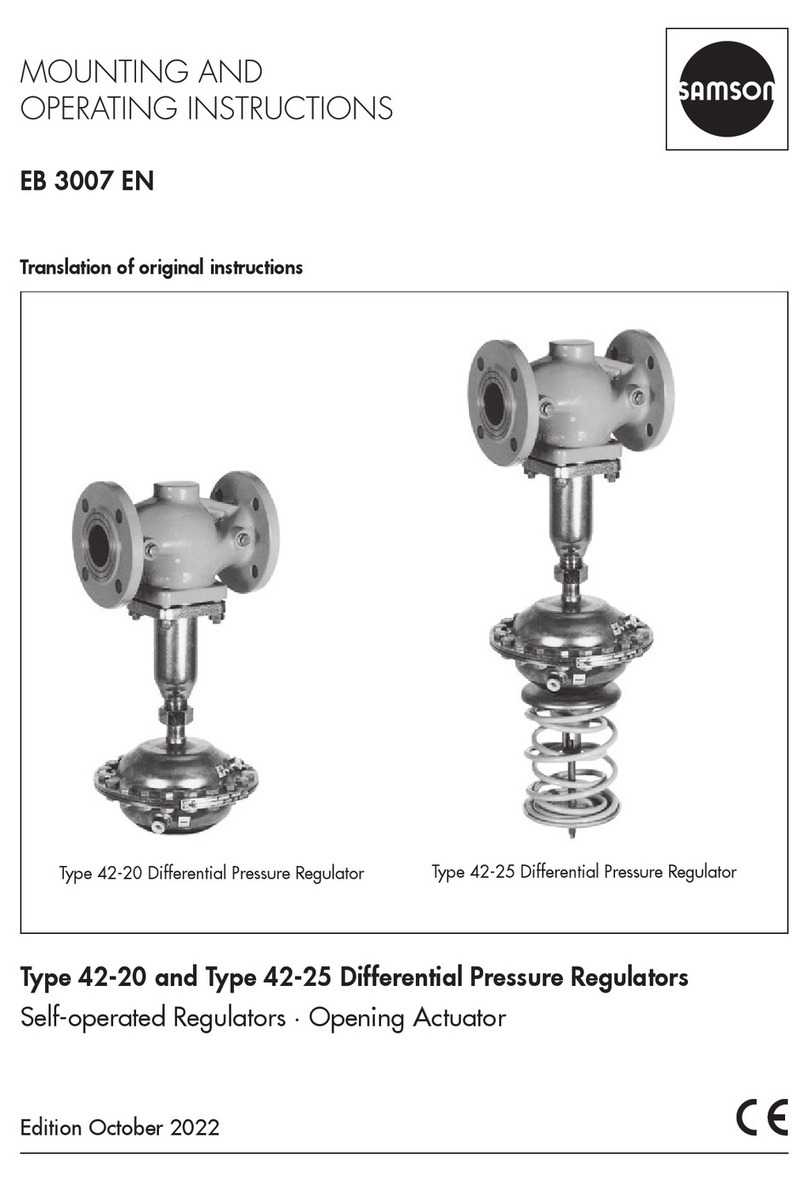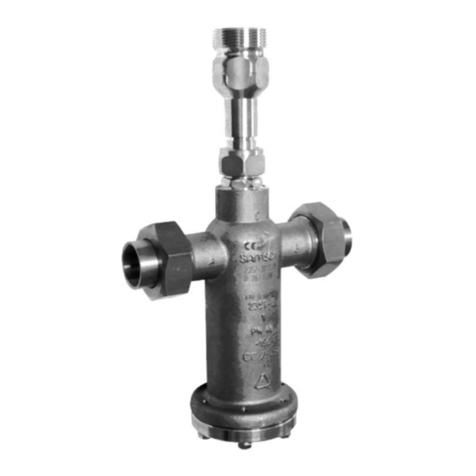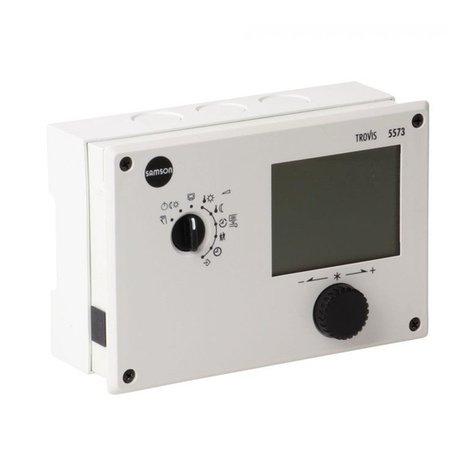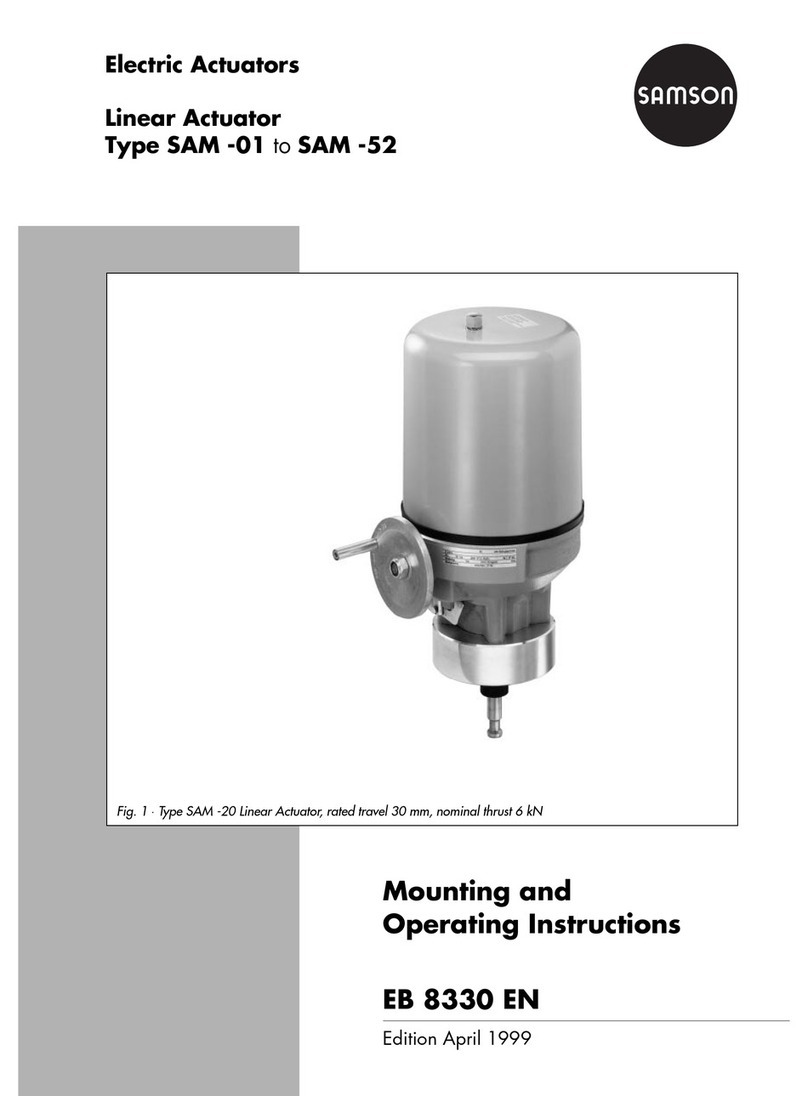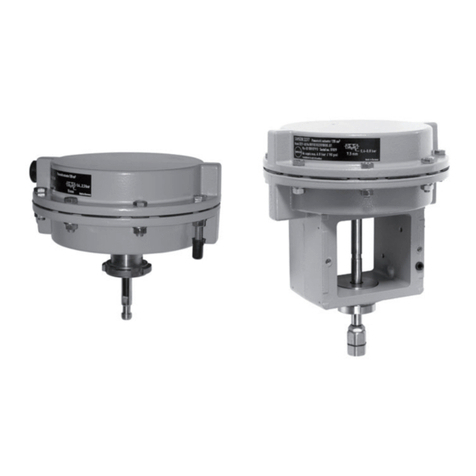
6 EB 3003 EN
Design and principle of operation
Regulator congurations
Regulator =Valve +Actuator
Type42-24 Type2422 balanced Type2424 adjustable set point
Type42-28 Type2422 balanced Type2428 xed set point
__
1) Type2422 Valve, balanced by a diaphragm, DN65 to 250 only
4 Design and principle of oper-
ation
See Fig.1 on page7.
The differential pressure regulators are de-
signed to maintain a constant pressure differ-
ence between the high pressure and low
pressure lines to an adjustable set point
(Type42-24) or a xed set point (Type42-
28).
The regulators basically consist of a valve
with seat (2) and plug (3) and a closing ac-
tuator (Type2424 or Type 2428) with an op-
erating diaphragm (13).
Valve and actuator are delivered separately
and must be assembled on site using a cou-
pling nut (11).
The medium ows through the valve between
the plug (3) and the seat (2) in the direction
indicated by the arrow. The position of the
valve plug determines the differential pres-
sure prevailing across the plant.
The Type2422 Valve is balanced. The forces
acting on the valve plug created by the up-
stream and downstream pressures are bal-
anced by a balancing bellows (5) or balanc-
ing diaphragm 1) (5.1).
The principle of operation of the regulator
balanced by a bellows or diaphragm only
differs concerning the pressure balancing.
Valves balanced by a diaphragm have a
balancing diaphragm (5.1) instead of the
balancing bellows (5). The downstream pres-
sure p2 acts on the bottom of the diaphragm
and the upstream pressure p1 on the top of
the diaphragm. As a result, the forces creat-
ed by the upstream and downstream pres-
sures acting on the plug are balanced out.
1Valve body
2 Seat
3Plug
4 Plug stem
5Balancing bellows
5.1 Balancing diaphragm (DN65 to 250)
11 Coupling nut
12 Diaphragm stem
13 Operating diaphragm
14 Diaphragm case
15 Nuts and bolts
16 Set point springs
17 Set point adjuster (set point nut)
18 Nut
19 Diaphragm plate
20 Control line
21 Overload protection (force limiter with
internal excess pressure limiter)

